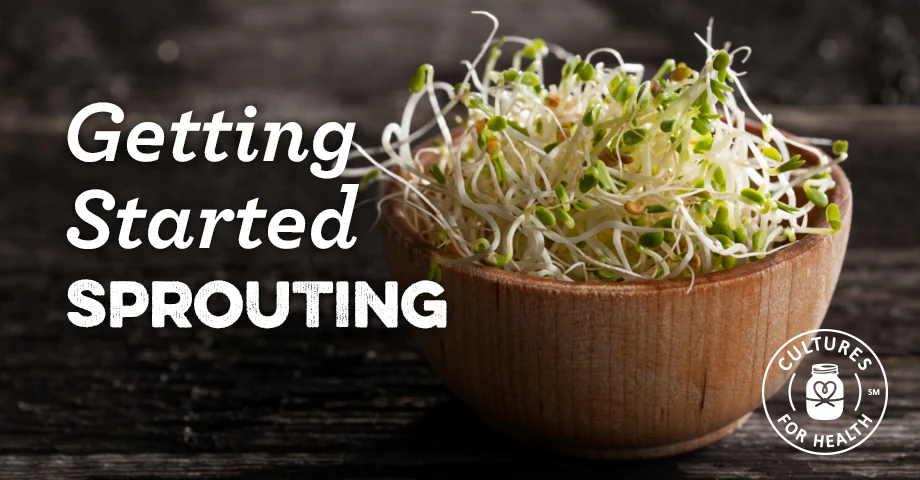
WHAT IS SPROUTING?
Sprouting is becoming more and more popular - and for good reason! This ancient practice, some claim, can turn a hard to digest grain, seed, or bean into a food product that your body digests as easily as a vegetable.
Put simply, sprouts are the first growth of a seed, before they turn into what will someday become the plants in our garden that we know and love. When you keep the seeds moist and warm they begin to sprout and create tiny little plants.
CHOOSING SEEDS FOR SPROUTING
Just about any seed can be sprouted. Choose from our wide variety of Organic Sprouting Seeds or follow the guidelines below:
- Avoid seeds that have been chemically treated.
- Grains and other seeds should have hulls intact.
- Avoid toasted, roasted, cracked, or milled seeds.
- Purchase seeds in sealed packages. Avoid bulk bins.
- Some seeds have sproutable printed on the label.
CHOOSING SPROUTING EQUIPMENT
There is a wide variety of sprouting equipment to choose from. Try an easy jar with a mesh lid, a fun sprouting kit, or use the equipment you own already to sprout seeds at home.
CHOOSING A SPROUTING METHOD
There are as many methods for sprouting as there are seeds to sprout. Follow specific instructions for your sprouting seed of choice or try one of these methods:
- Sprouting in a jar: a good general method for nearly any seed.
- Sprouting in a tray or plate: works well leafy sprouts like alfalfa.
- Sprouting in a sack: best method for larger seeds like beans, for better ventilation.
-
Sprouting on a terra cotta saucer: best method for mucilaginous seeds like chia and flax seeds.

WAYS TO USE SPROUTED SEEDS
Eat Them
Sprouts can be enjoyed in many dishes and recipes. While many sprouted vegetable seeds can be enjoyed raw, sprouted legumes and grains should be cooked before consuming. Learn more about using sprouts in recipes in our article on Choosing Sprouting Seeds.
Store Them
When you are satisfied with the length of the sprouts, store them in a sealed container in the refrigerator for fresh eating. The storage point should coincide with a dry point in the sprouting process in order to prevent mold. Do not rinse seeds, cover tightly and store in the refrigerator.
- Vegetable sprouts keep in the refrigerator for about 5 days.
- Bean sprouts keep in the refrigerator up to a week.
- Dried grain sprouts keep indefinitely (though older dried grain sprouts may have lost some nutritional content).
Dehydrate Them
Dehydrate sprouted grains and grind into sprouted flour. Sprouted flour can be substituted for conventional flour in any recipe. Learn more in our article Baking with Sprouted Flour.
Continue Growing Them
Transfer just-sprouted seeds to soil for growing delicious microgreens for salads and sandwiches.
Transferring just-sprouted wheat or barley to soil for growing wheat grass or barley grass for juicing.















